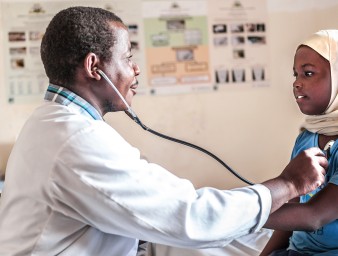The factual backdrop for human rights protection and development agendas
27 May 2013

The UN Human Rights Office has spent the past several years researching, consulting and now implementing a range of statistical indicators to assist in measuring progress in realizing human rights. The indicators have been adopted in several countries in a number of situations, including in the reform of judicial systems, in measuring the rights of indigenous communities, the rights of persons with disabilities, the success of national human rights institutions and in mainstreaming human rights in national development planning.
At the launch of “Human Rights Indicators: A Guide to Measurement and Implementation”, in Geneva, UN Human Rights Chief Navi Pillay, said its publication was in response to a “longstanding demand that we develop and deploy appropriate statistical indicators in furthering the cause of human rights.”
“Twenty years ago, one of the recommendations of the Vienna Declaration and Programme of Action was that we employ and analyse indicators to help measure our progress in human rights,” Pillay said.
“Only robust and accurate statistics can establish the vital benchmarks and baselines that translate our human rights commitments into targeted policies,” she said, “and only they can measure how effective those policies truly are.”
Pillay welcomed the adoption of the indicators in a number of countries in Latin America, Europe, Africa and Asia. Invited panellists at the launch event gave practical examples of the importance of indicators in underwriting and assessing programmes, which incorporate human rights principles.
The former Mayor of Mexico City, Marcelo Ebrard Casaubon, described how human rights indicators were developed for a project involving the Superior Tribunal of Justice and with a specific focus on the right to a fair trial.
Loretta Rosales, the chairperson of the Commission on Human Rights of the Philippines, described a “simple statistical analysis of arbitrary killings, enforced disappearance and torture… from 2001 to 2010… correlated with policy gaps or failures during the previous government, (which) provided a factual backdrop to what has been described as a climate of impunity in our country.”
“Because we had the numbers to back up our negotiating points,” Rosales said, “it was easier for us to generate meaningful reform commitments from the Armed Forces and Police institutions which have been established as the biggest perpetrators of enforced disappearance and torture, respectively.”
“Internally, the use of human rights statistics relating to these violations resulted in targeted deployment of institutional resources, increased professionalization of human resources and justified requests for equipment in support of investigation and monitoring,” she said.
Maria-Virginia Gomes, a member of the Portuguese National Commission for Human Rights described a project she has been involved in, where the list of indicators developed by the UN Human Rights Office is being used to develop a tailored set of standards for the right to education and the right to liberty and security of person.
In her role also as a member of the Committee on Economic, Social and Cultural Rights, one of the human rights treaty monitoring bodies, Gomes said it had been clear for a long time that a “set of reliable indicators (was needed) to measure compliance of States with their treaty obligations.”
“It is not that States do not provide statistical data but, often such data is not geared towards compliance with human rights obligations because it represents mainstream trends of progress or lack of progress and seldom takes into account human rights standards of non-discrimination, equality, participation and accountability,” Gomes said.
A major strength of the human rights indicators produced by the High Commissioner’s Office is that “they have used a common approach to deal with civil and political rights and economic, social and cultural rights on an equal footing”, she said.
All panellists underlined the importance of ensuring a firm platform for cooperation among human rights, statistical and policy-making communities to help improve the measurement and implementation of human rights, as one of the three pillars of the United Nations, along with peace and security and development.
Jan Robert Suesser, Senior Official Statistician, Member of the Board of the Ligue des droits de l'Homme, and Senior Advisor to the International Cooperation Agency of the Ministry of Finance in France, said that information is more legitimate if and when it is owned by all major stakeholders.
Suesser referred to the experience of Poland, when the country was on a general strike in 1980, and that among “the 21 claims put forward by strikers to the authorities, the sixth was about making economic and social information publicly available and not restricted to the ruling authorities.” He said that “it shows how in practice, and not merely in theory, access to statistical information and respect of human rights were understood by the population as intrinsically linked”.
Rajeev Malhotra, Executive Director at the Centre for Development and Finance and Professor at the Jindal School of Government and Public Policy in India, said that “above all, indicators help in improving follow-up on the recommendations and concluding observations of treaty bodies and other mechanisms, and allow national human rights institutions and civil society organizations to exercise more effective oversight on the promotion and protection of human rights”.
Participants at the launch underlined that that the establishment of national human rights indicators is a good example of a practical, measurable and scientific way to engage with a wide range of relevant stakeholders for human rights implementation at country level. Comments from participants also recognized the usefulness of the Guide for the post-2015 development agenda, in particular in dispelling the misconception that human rights are not measurable and therefore cannot be mainstreamed in development agendas.
27 May 2013

VIEW THIS PAGE IN:



